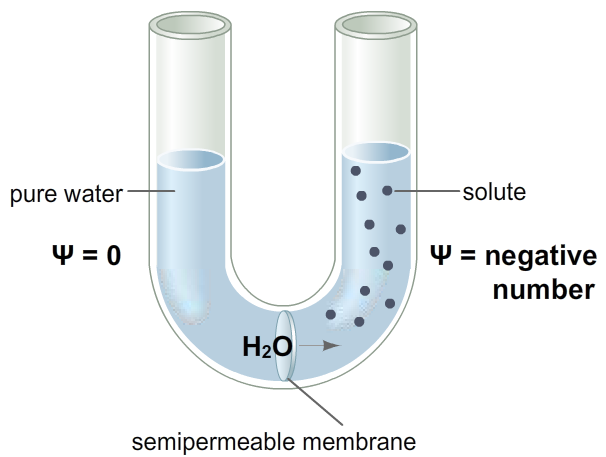Water is essential for plant survival, playing an important role in photosynthesis, the transport of solutes, cooling, and structural support. Whether a plant cell takes up water from its surroundings depends on a measure called water potential (Ψ, psi).
Plant biologists define water potential as the tendency of a solution (water plus solutes) to take up water from pure water across a membrane. By definition, the water potential of pure water is zero. Any solution that has a water potential less than zero has a tendency to take up water from pure water. The lower (more negative) the water potential, the greater the driving force for water movement across the membrane.
Water potential has two major components:
- Solute potential (Ψs) reflects the number of dissolved molecules in a solution.
- Pressure potential (Ψp) reflects the amount of pressure on a solution. In a phenomenon called turgor pressure, the cell wall exerts pressure in plant cells, increasing the cell's pressure potential.

The water potential is the sum of the solute and pressure potentials:
Ψ = Ψs + Ψp in megapascals (MPa)
Click on the Next button below.

